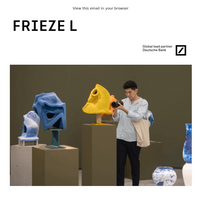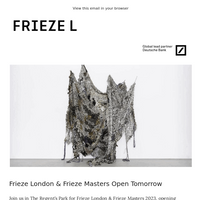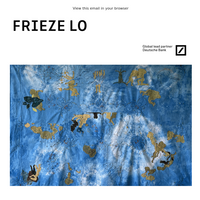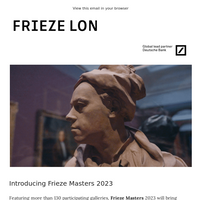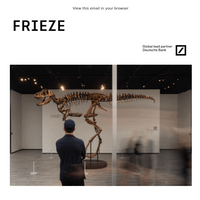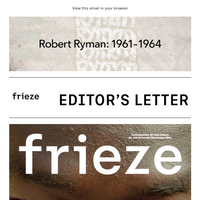|
Hello,
‘In Venice,’ the novelist Colm Tóibín writes for our new April issue, devoted entirely to the 60th Biennale Arte, ‘it is essential not to stroll or idle or appear leisurely or slack.’ Despite its seductive charms – the quaint alleys that seem to promise the ‘real’ Venice; the rumour of that hole-in-the-wall trattoria you suspect is ‘just over there’ – the city is one in which you should know where you are going before you set out.
This truism sounds a provocatively dissonant note with the biennial itself, which sees presentations by hundreds of artists from around the world, whose work often tells us not where our destination lies but something about the journey. Such is the focus of this year’s biennial, ‘Foreigners Everywhere’, curated by Adriano Pedrosa. ‘Wherever you go and wherever you are, you will always encounter foreigners,’ he writes in his curatorial statement, adding that ‘no matter where you find yourself, you are always truly, and deep down inside, a foreigner’.
Living with the fears, hopes, contradictions and dreams of unsettled life are some of the major themes this special issue alights upon to test their limitations and probe their possibilities. Vanessa Peterson profiles John Akomfrah, representing the UK this year, who speaks to her of how ‘urgent and demanding’ his task is and the spirits he is reckoning with. Brooklyn Museum curator Dare Turner leads a discussion with Jeffrey Gibson, Archie Moore and Inuuteq Storch – representing the US, Australia and Denmark respectively – about the opportunities and perils, as Indigenous artists, of working within the settler-colonial framework of the pavilion system. It is about history, and it is about language, Moore notes, challenging even the term ‘representation’.
Plus, a series of columns devoted to how artists think about mother tongues, from the polyglottal opera helmed by Lap-See Lam in the Nordic Pavilion, to the invented alphabets of Emirati artist Abdullah Al Saadi. While you may need to know where you are headed in Venice, the same does not hold true for the biennial, where chance discoveries are often the most rewarding. In that spirit, we offer this issue not as a guidebook, but as a continuation and an extension of the important conversations that did not begin with this exhibition and will not end with it.
Best,
Andrew Durbin
Editor-in-Chief, frieze
|



